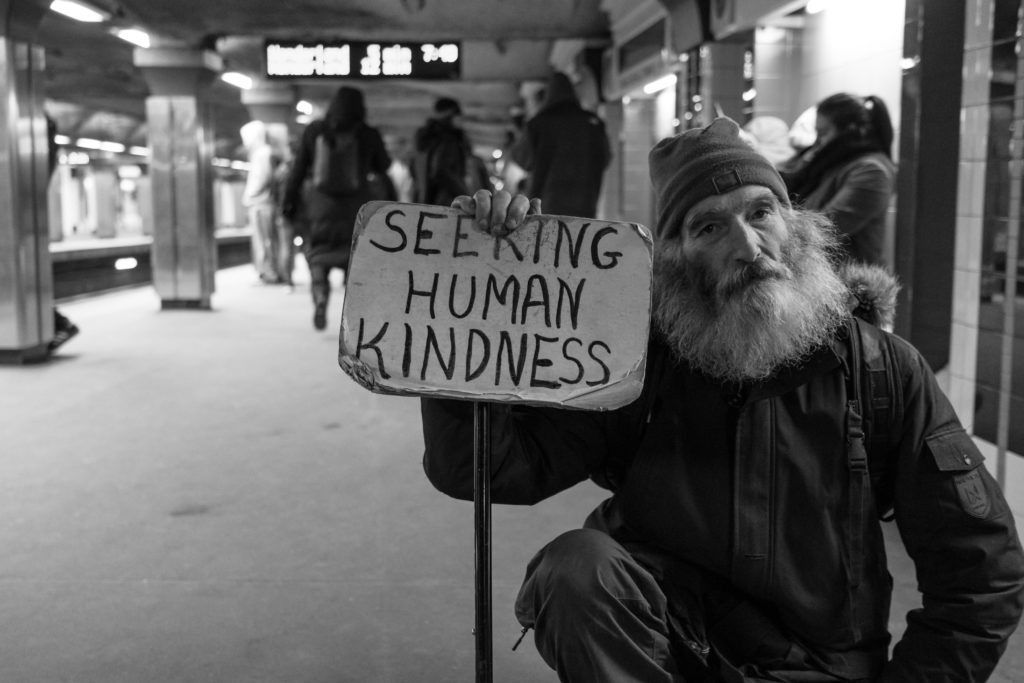
The Top 5 Things Gateway Church Discovered Running an Extreme Weather Shelter
This is the second article in a 3-part story on the Extreme Weather Shelter opened up by Gateway Church in Abbotsford, British Columbia. You can read the first article here.
When Gateway CRC decided to host an Extreme Weather Shelter in their building three years ago, the staff and volunteers knew there would be a lot to learn. Some were expected – that there would likely be drug issues, and that members of the congregation would have mixed emotions and reactions, and that the needs could be greater than anyone had imagined – but there were other unexpected surprises along the journey, too. Gateway Church wanted to share these learnings with other churches and groups who might be considering a similar venture in their community.
So here they are – the Top 5 things that Gateway Church discovered about running an Extreme Weather Shelter:
- The Need for Dry Socks… and more – In addition to space, bedding, meals, and volunteers, it was quickly noticed that the shelter guests had other practical needs, like the importance of a dry pair of socks. Volunteer Coordinator, Teresa Spyksma, was surprised at how many pairs they have handed out so far. Gateway is also in the process of installing a washer and dryer in the church as providing clean and dry clothes for the guests meets another practical, yet important, need.
- The Amount of Work and Time – Head Coordinator of the Shelter, Jenny Vanderheide, shared that it took way more hours than she expected to organize all the volunteers, saying it takes about 8 volunteers per night to run the shelter: 5 to provide food and 3 to cover both shifts. Gateway staff have also learned that the shelter work isn’t necessarily over when morning comes. They found that many shelter guests, attracted to the hospitality, did not want to leave in the morning or would find reasons to spend more time in the area. This presented new challenges, but also unique opportunities and lasting relationships, and certainly involved a steep learning curve regarding how to respond in a way that was suitable for the church and for the clients.
- The Presence of Drugs – One of the biggest challenges with running the Extreme Weather Shelter is the reality of drugs. While it is somewhat possible to prevent the use of drugs on the property, avoiding the evidence of drug use that comes with it (paraphernalia, needles, etc.) is a bit more difficult. Staff and congregation members have had to learn how to manage this as well as respond to the fears that inevitably go with it. Something else that surprised Spyksma was why homelessness and drug-use seem to go hand-in-hand. “I used to believe that people got addicted to drugs and [then] ended up on the street – homeless,” she remarked. “Now I have learned that it is much more common to have other situations cause the homelessness and once on the street, people turn to drugs.”
- The Prevalence of Mental Health Issues – Many of the people who come into the shelter have a variety of mental health issues, apart from addictions to drugs or alcohol. In fact, in many cases, this may be the underlying cause for homelessness or addiction. Supporting these people might be the greatest challenge at the Shelter, according to the coordinators. Dealing with the drugs and mental health has helped the church realize the importance of partnering with organizations who are already equipped to deal with these situations.
- The Joy of Building Relationships – Coordinators, staff and volunteers consistently share the same experience – as Vanderheide says, “You become attached to these people when you see them night after night and wonder where they are when they do not show up one night, and hope and pray that they are okay.” Spyksma explains how hearing the heart-wrenching stories when she talks one-on-one with the clients helps her to feel more empathy and love. She says she knows that the clients feel the impact of this as well, as some come in just to sit and chat or to pray with the volunteers after something has happened to them. The relationships being built go both ways, as some of the guests have become protective of the church and have taken sacrificial steps to safeguard the building and volunteers from any perceived danger. Other guests have found housing and job offers from connections with church members, and one gentleman regularly attends Gateway Church on Sunday mornings because of the relationships that are being formed.
The biggest surprise expressed by those involved with the shelter is that they feel so blessed to be part of it.
Although there has been a lot more learning and work than unexpected, the biggest surprise expressed by those involved with the shelter is that they feel so blessed to be part of it. Spyksma sums it up beautifully: “I had NO idea that I would love this work. I love being able to actively serve this marginalized community and try to show through my speech and actions that they are valuable, worthy of respect, and ultimately loved.”
Image by Matt Collamer on Unsplash: (I met Michael in a Boston subway station. I told him I liked his sign. “What matters is what it means to you,” he told me. I asked what it meant to him. “Doing a deed or expressing kindness to another person without expecting anything in return,” Michael said. I love approaching strangers wherever I go. Listening and talking to them teaches you about people and how similar we all are to one another. Just like Michael, we’re all seeking human kindness.)

Monica Kronemeyer deRegt is a freelance writer and Academic Counselor at Abbotsford Christian School. She lives in Chilliwack, BC, with her husband and three children.



